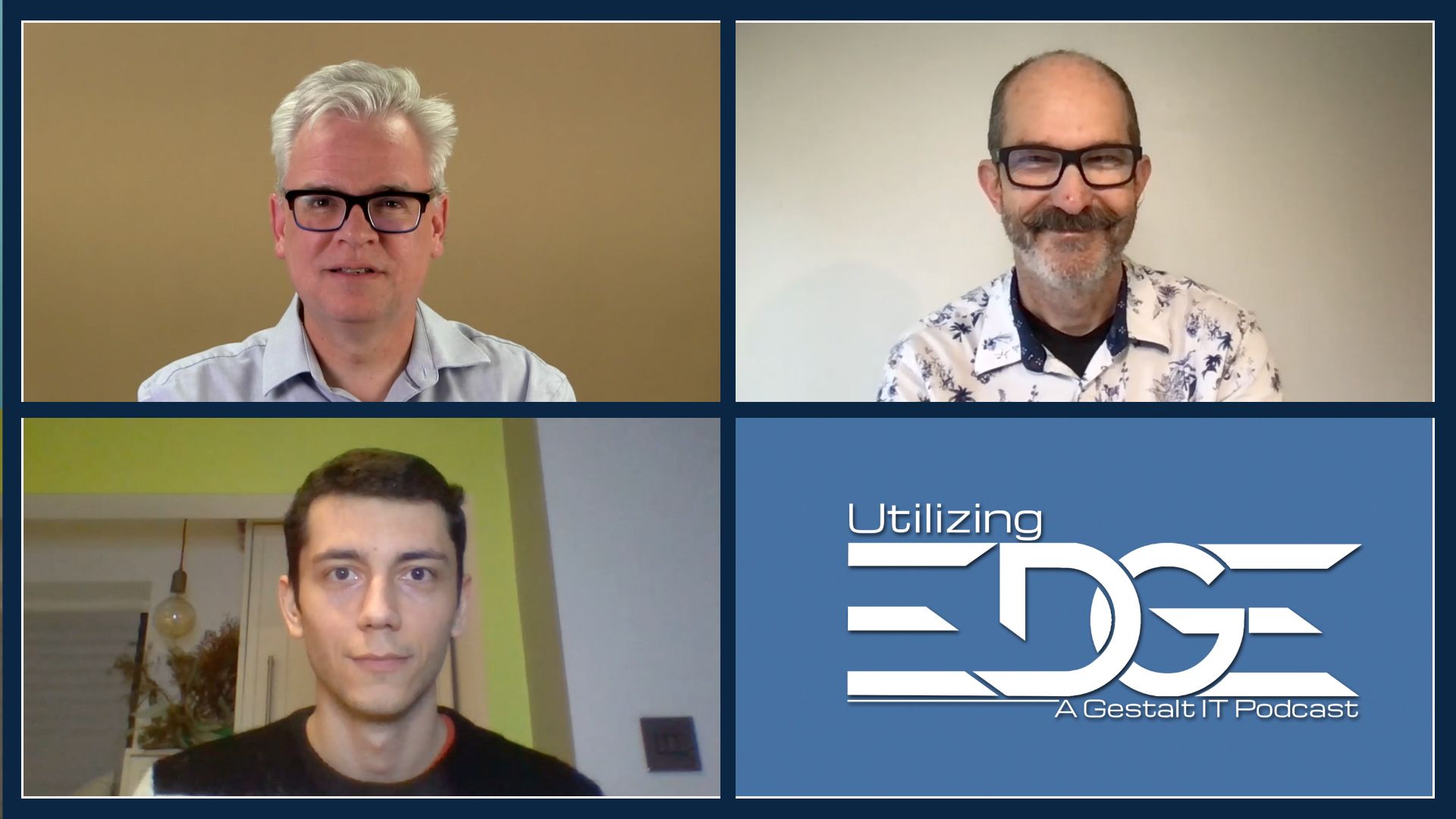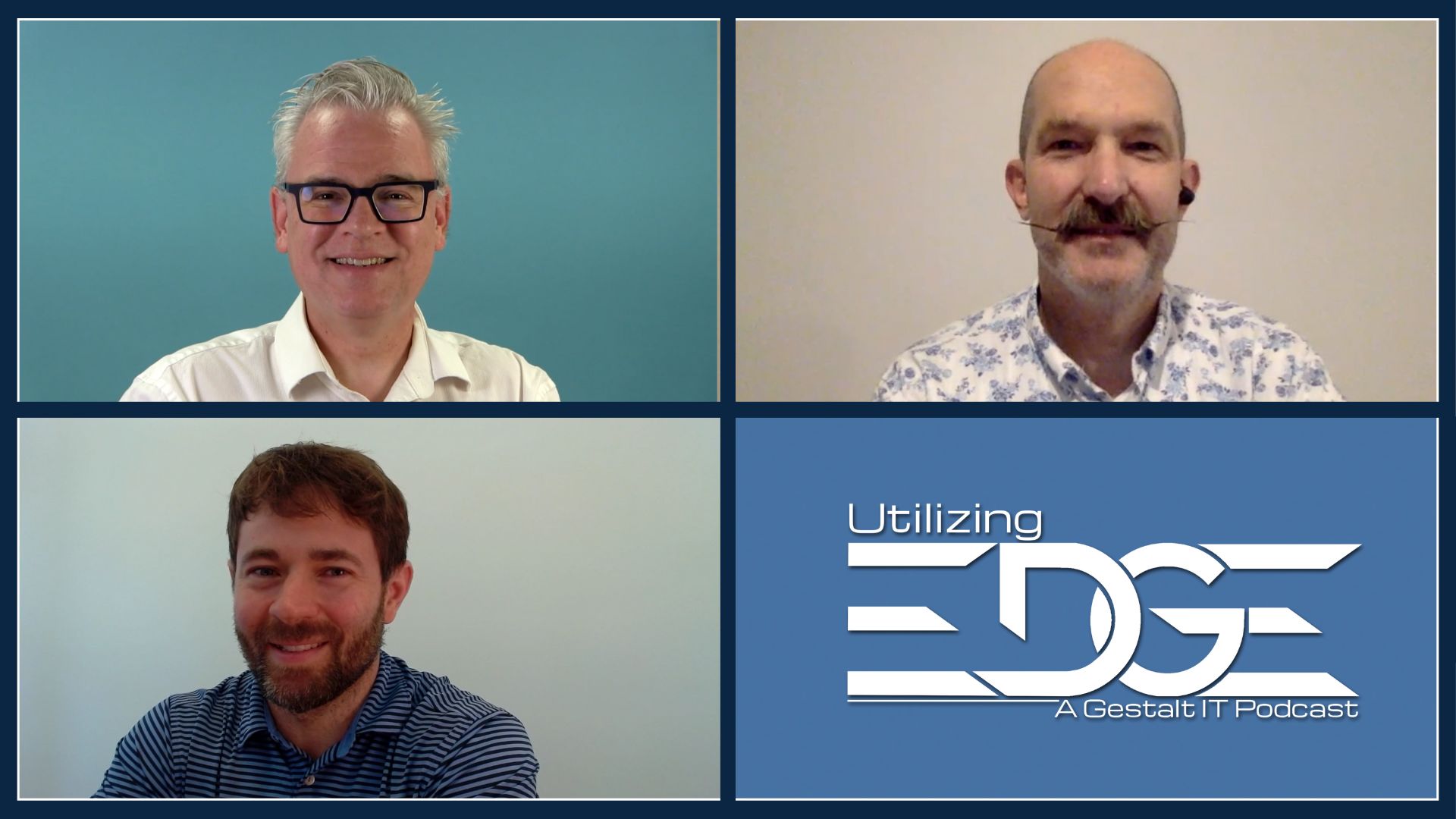One of the main differentiators for edge computing is developing a scalable architecture that works everywhere, from deployment to support to updates. This episode of Utilizing Edge welcomes Dave Demlow of Scale Computing discussing the need for scalable architecture at the edge. Scale Computing discussed Zero-Touch Provisioning and Disposable Units of Compute at their Edge Field Day presentation, and we kick off the discussion with these concepts. We also consider the undifferentiated heavy lifting of cloud infrastructure and the tools for infrastructure as code and patch management in this different environment. Ultimately the differentiator is scale, and the key challenge for designing infrastructure for the edge is making sure it can be deployed and supported at hundreds or thousands of sites.
- Stephen Foskett, Publisher of Gestalt IT and Organizer of Tech Field Day. Find Stephen’s writing at GestaltIT.com and on Twitter at @SFoskett.
- Brian Chambers, Technologist and Chief Architect at Chick-fil-A. Connect with Brian on LinkedIn and Twitter. Read his blog on Substack.
- Dave Demlow, Vice President Of Product Strategy at Scale Computing. You can connect with Dave on LinkedIn or find out more on Scale Computing’s website.
For your weekly dose of Utilizing Edge, subscribe to our podcast on your favorite podcast app through Anchor FM and check out more Utilizing Tech podcast episodes on the dedicated website, https://utilizingtech.com/.
Key Points
One of the main differentiators for edge computing is the development of a scalable architecture that can function effectively in various environments, from initial deployment to ongoing support and updates. In this episode of Utilizing Edge, Dave Demlow from Scale Computing highlights the significance of scalable architecture for edge deployments. During their Edge Field Day presentation, Scale Computing discussed the concepts of Zero-Touch Provisioning and Disposable Units of Compute, which set the stage for the conversation. They also explore the challenges and opportunities presented by managing multiple copies and footprints of applications in edge environments.
Zero-touch provisioning plays a vital role in enabling seamless deployment, scaling, and management of resources at the edge without requiring human intervention. It ensures that the necessary infrastructure is provisioned automatically, eliminating manual efforts and streamlining operations. Disposable units of compute are a key design goal in edge infrastructure, prioritizing resilience and automated handling of failures. This approach allows for efficient resource allocation and facilitates the management of a distributed and scalable edge infrastructure.
Edge deployments demand cost-effective, disposable hardware due to the scale and distributed nature of the infrastructure. Unlike the high-reliability systems found in enterprise data centers, the edge requires a different approach. Resilient edge infrastructure requires careful consideration of cost-effectiveness, scalability, and resource allocation to accommodate the unique demands of edge environments.
Automation plays a crucial role in managing and scaling edge deployments efficiently. By reducing manual efforts and ensuring consistency across multiple locations, automation enables developers and operators to focus on their core applications and services. This abstraction of underlying infrastructure complexities enhances the overall experience for developers and operators, streamlining operations and promoting scalability.
In summary, the key to successful edge deployments lies in developing a scalable architecture that can be deployed and supported at numerous sites. This involves leveraging concepts such as zero-touch provisioning and disposable units of compute, prioritizing automation, and considering the specific constraints and challenges of edge environments. By designing for scalability, cost-effectiveness, and resilience, organizations can effectively harness the potential of edge computing and deliver valuable applications and services.




